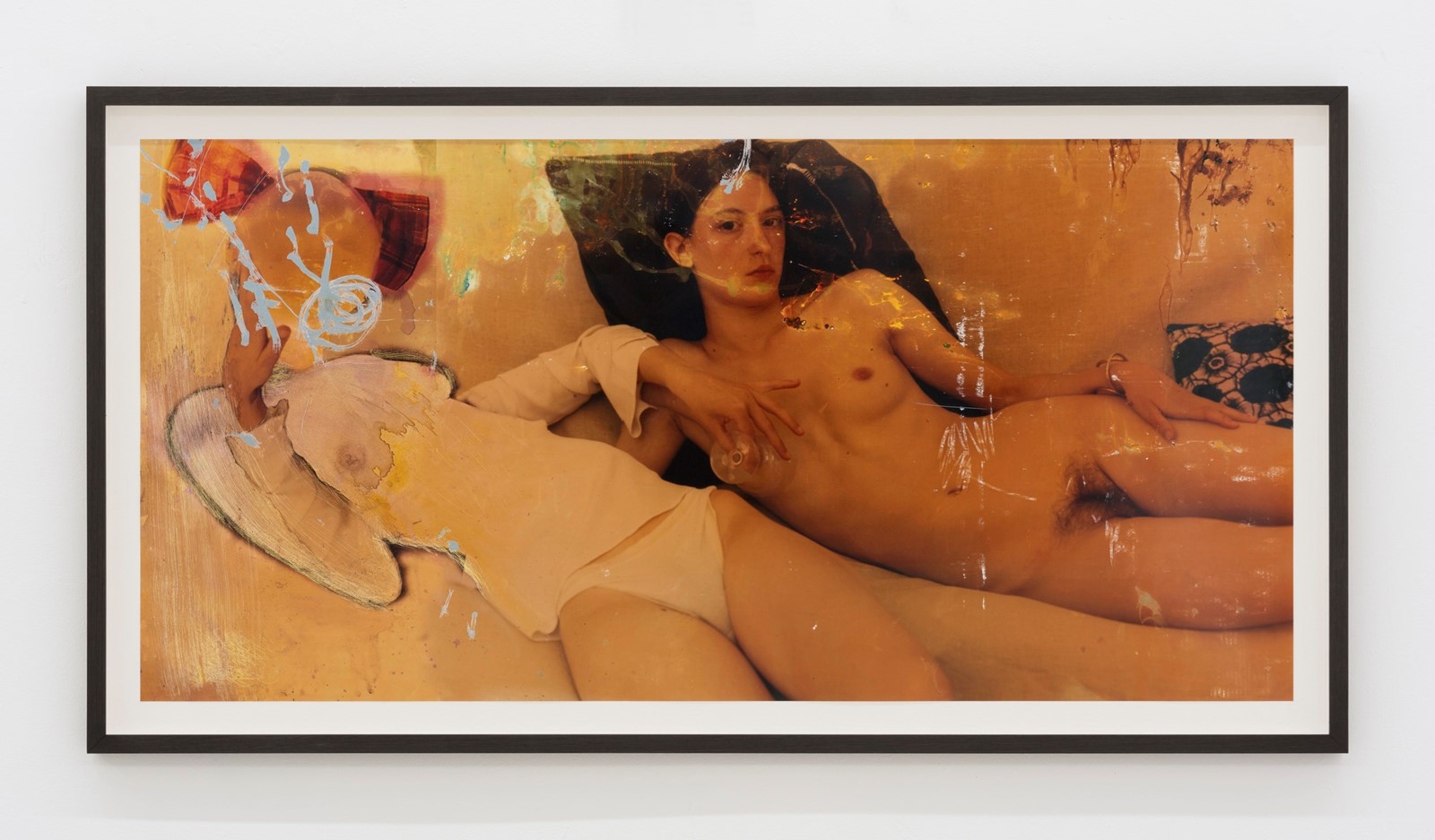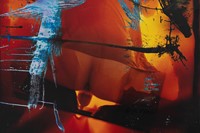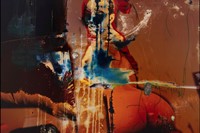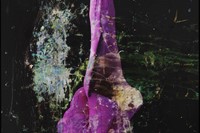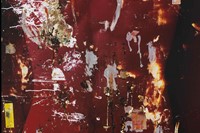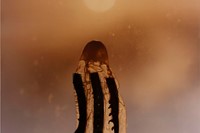“There’s no designer vagina,” says London-based photographer Harley Weir, who is discussing a series of intimate images in her new solo exhibition, Sins of a Daughter, at Hannah Barry Gallery in Peckham. “They all look so different and they’re all beautiful in different ways.” Gathering together 30 of her photographs old and new – some of which have been abstracted and collaged over with household products and bodily fluids like cum, spit, pee and blood – these frenetic, highly emotional images draw on themes of inherited family trauma, sexuality, shame, motherhood and the knotty topic of desire.
Weir is responsible for era-defining fashion images that include Young Thug in a Molly Goddard dress for Dazed, or Klara Kristin’s much-debated ‘up-skirted’ Calvin Klein campaign shot, but this exhibition shows an artist running amok, unfettered by budgets and collaboration. “It’s difficult when you’re working with people,” she explains. “In my personal work, I can get closer to the truth.”
Dear mother – a darkly-lit image of a woman with her legs splayed apart – recalls Gustave Courbet’s controversial 1886 painting L'Origine du monde, but Weir zooms in further, giving an almost microscopic view of the vulva. These vagina pictures hang next to images of a lactating nipple and a breastfeeding baby, throwing the very notion of the Madonna-Whore complex into disarray. Elsewhere, pop culture icons like Avril Lavigne and Kylie Jenner appear subtly in the work; “[they’re] the girls of this generation,” says Weir, citing the dulling effect of constantly being on social media. “There is beauty in everything, and everyone does have a beautiful side and a grotesque side,” she says. “We only see that one side, that beautiful side – especially with social media.”
Here, Weir talks about the line between pornography and art, why we must learn to love our vaginas, and the reality of working in the fashion and art industries as a woman.
Violet Conroy: How did the idea for the show come about?
Harley Weir: I was thinking about bloodlines, the inherited weight of gender, things that get passed down from your family like trauma, illnesses, or general upbringing. The title Sins of a Daughter comes from the saying ‘sins of the father’, which stems back to a previous book I made called Father, which was a series of male nudes exploring the female gaze and desire.
VC: Do you think of yourself as a fashion photographer first and an artist second, or is there no distinction between the two?
HW: I dislike labels, they hold us back from doing what we want. I feel very fluid, but there’s not really a good definition for such things. I’m comfortable though with whatever people want to call me at this point.
VC: Do you approach the two modes of working in the same way? Or does your personal work allow you to tackle themes that maybe your fashion stuff doesn’t?
HW: It’s always a huge collaboration when you’re doing a fashion project. There are hundreds of people on set – you’re not alone. With fashion, it doesn’t really feel [like it’s] my own, because I wouldn’t necessarily share my inner thoughts with people I don’t know very well.
My personal work feels quite different. Often it’s abstract and without people, because I don’t feel 100 per cent that anything is fully mine if it’s a picture of someone else – that’s a collaboration. It’s difficult when you’re working with people; it’s important to respect them. I don’t want to make anyone feel bad about the way they look in an image, [but] that’s not the truth. In my personal work, I can get closer to the truth.
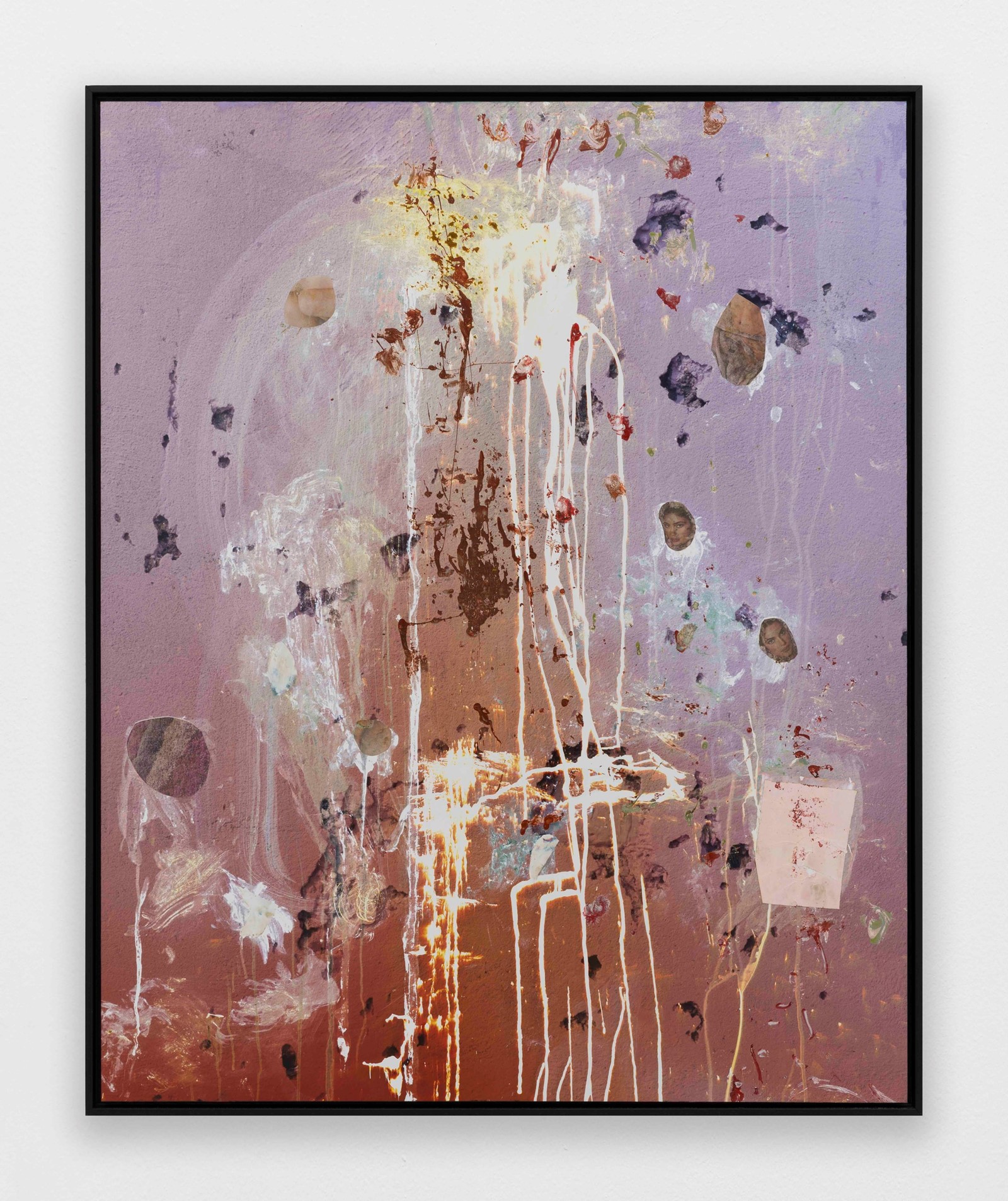

VC: Some of the pieces seem to tackle sexuality and shame. Has making these images allowed you to work through your thoughts about these things?
HW: Yes, it has. I overlay or paste on a lot of the images; they’re hardly visible in the finals, and are almost like secret, cathartic symbols of such thinking. I almost find it like art therapy. There’s alchemy in the darkroom, it’s completely black and I’m experimenting with waste products, whether it’s bodily fluids or wasted beauty products I take from my bathroom cabinet. It’s very physical in the dark, and there can be a real abstract feeling. When you have no other senses, your mind can really unravel. I get really heightened emotions when I’m in there.
We have so much stimulation constantly, social media is always in our faces. We’ve always got our phone to pacify ourselves. When you’re completely in the dark, your mind has time to run wild. I feel like a lot of thoughts and things like that will come out when I’m doing those things, and I think they really look like that feeling when I see the final result afterwards.
VC: What inspired you to use bodily fluids?
HW: It felt quite natural to start experimenting. Originally, I wanted to see what cum looked like on photo paper if it was left. That was the first one I did, when I made the book Father. I was trying to make a cover for the book, and I wanted it to be bodily fluids, then I put it into the processor and I realised it stained it in a very painterly way.
VC: What about the vagina images?
HW: When I looked back at the vagina images, I thought, ‘Oh god, how expected of me to do vaginas again!’ But I still think that we don’t see them enough, because they’re so internal. As a girl you must use a mirror to even look at your own. We see the beautiful mound in art and plastered everywhere – but [the] open [part] is still quite unseen. I remember having to turn to porn when I was a kid to really see one.
When I took those images, it had a big effect on me because I’d never seen anyone’s vagina properly before. It was quite important for me to do that. I’m so thankful for the girls that allowed me to do it because it was really eye-opening and it made me realise that everyone is so different. There’s no designer vagina, we’re all so different and they’re all beautiful in different ways. And we must learn to love them.
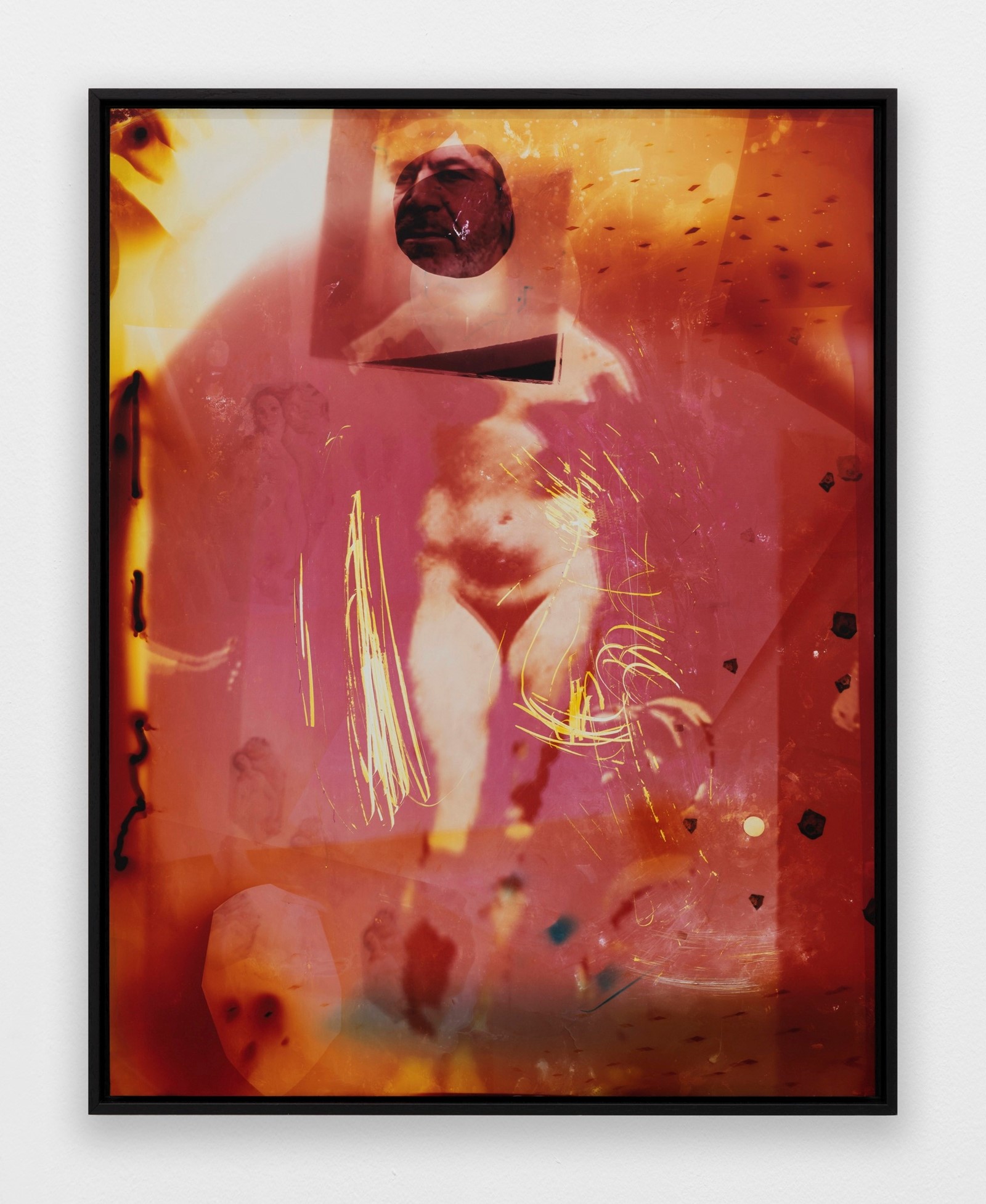
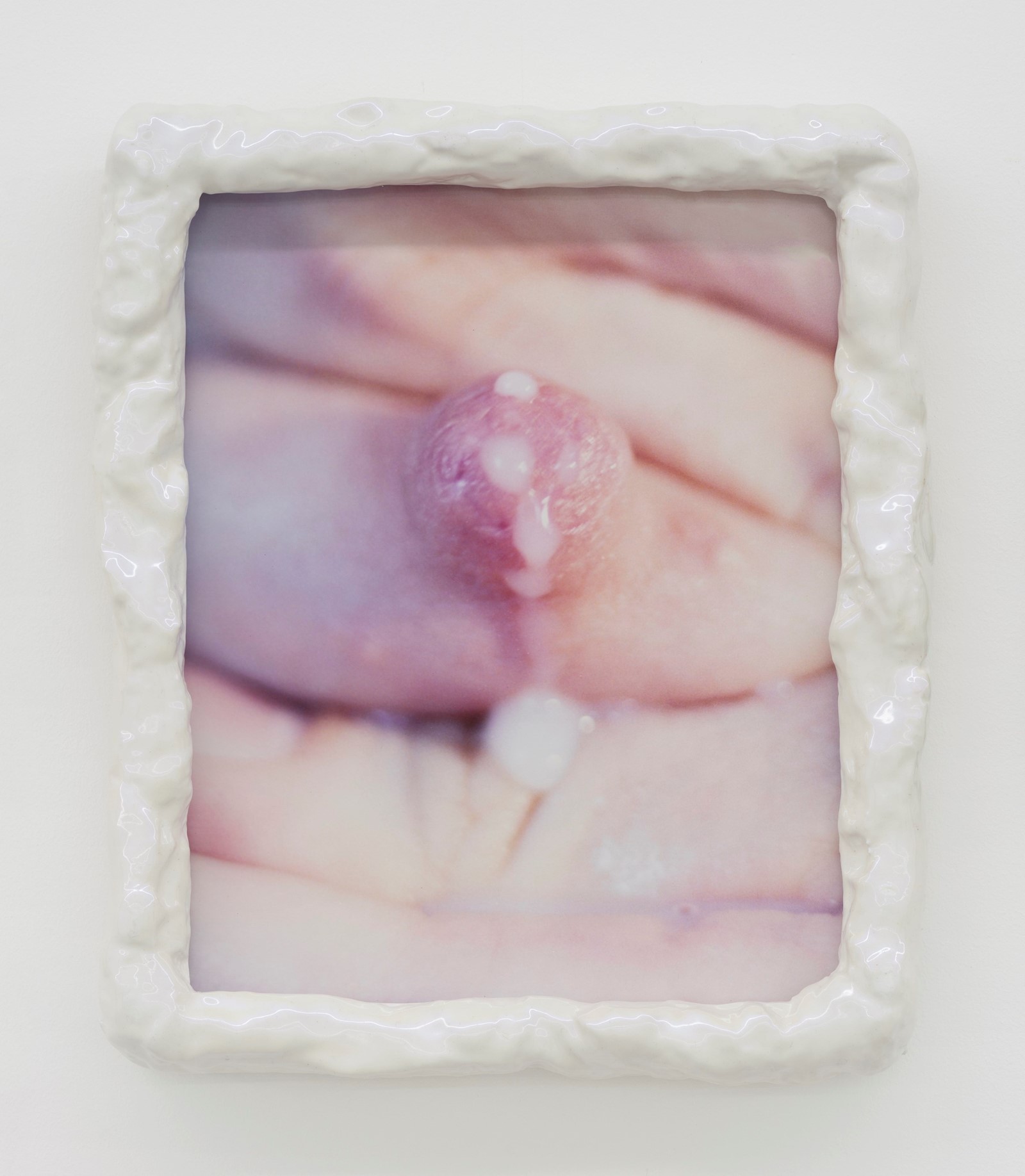
VC: Do you think there’s a world in which pictures of vaginas, like the ones you took, will not be read as pornographic by people?
HW: It’s tricky. A lot of the girls who came to have their picture taken were very well-groomed, and I had hoped they might be a bit more realistic. I did wonder, ‘Oh, are these vaginas too beautiful?’ because I don’t want to give people the wrong impression. These people knew they were going to have photos taken of their vagina, so a lot of them were waxed or shaved, which could give them a more porno feeling.
VC: I loved the vagina picture with Avril Lavigne’s face superimposed on top.
HW: [Laughs.]. My first assistant Alexa was helping me late to print those, and we were looking through old images to overlay with the vaginas, and she was like, ‘How about Avril?’ I was like, ‘Hell yes!’.
“We have so much stimulation constantly, social media is always in our faces. We’ve always got our phone to pacify ourselves“ – Harley Weir
VC: You’ve got these pop culture icons in the work, like Avril Lavigne and Kylie Jenner – what compelled you to include them?
HW: I go through old images I’ve collected, weekly newspapers, and make little piles with images that sing to me at the time, and those happened to be in there. I feel like they [Lavigne and Jenner] are the girls of this generation, I see their faces so often they are almost like a motif. It’s subconscious almost, but there’s also a fair amount of intent in there. Since I do it all in the dark and don’t use any glue, what sticks is almost like a tarot card reading.
VC: A lot of the work is about motherhood, with the breastfeeding images. What about this concept interests you?
HW: I mixed those images on the wall with images of vaginas because I was thinking of the idea of function, and those parts being functional rather than sexual. I thought, ‘Oh gosh, is someone going to feel uncomfortable that a vagina is next to an image of a breastfeeding boob,’ but I thought: no, it makes perfect sense. That’s what they were created for. We shouldn’t even really have to think about that, but we do.

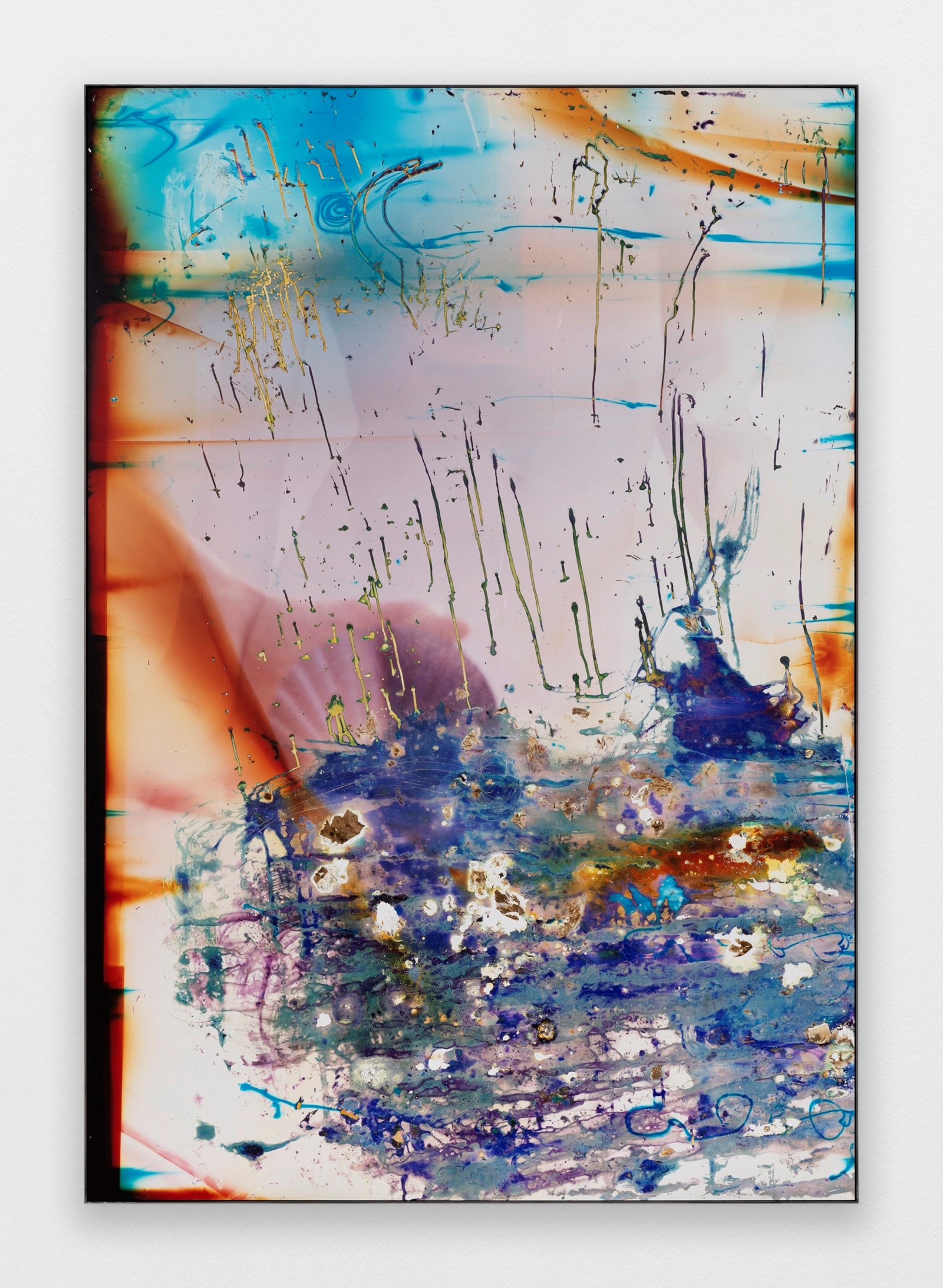
VC: Is beauty something you’re still looking for in your work?
HW: Beauty, for me, is what draws people to an image and helps them listen. I would love for things to be less beautiful, but when you’re working with people it’s really hard. If you’re photographing people, it’s important to make them feel comfortable, or at least I think so. I love the work of photographers who really show the truth in all its grotesqueness, and I feel like I hold back from that because I care about the people that I photograph. I don’t want them to be disappointed or feel ugly.
If it was a better world, we wouldn’t mind about those things. There is beauty in everything, and everyone does have a beautiful side and a grotesque side. We only see that one side, that beautiful side – especially with social media. It’s complicated. Beauty is a big topic.
VC: What’s it like being a woman in the fashion and art industries now, and has it changed since you first started out as a photographer?
HW: It’s changed a lot. I definitely felt very embarrassed about being a girl when I was younger. I feel very comfortable being a girl now. I felt like I was disrespected, or that people didn’t or wouldn’t give me the respect I wanted as a girl sometimes. I feel like it’s changed a lot in a good way, and that’s really exciting.
Sins of a Daughter by Harley Weir is on at Hannah Barry Gallery in London until May 7.
